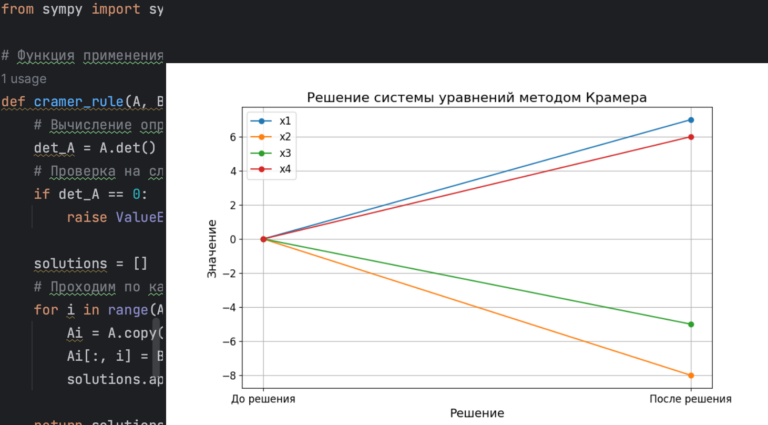The battle for control of the supply of microchips, and what is the role of Russia in this matter?
Semiconductors are as important to global capitalism today as access to energy resources. Only a handful of countries can produce the most advanced microchips, and control of their supply is becoming a key battleground in the US-China trade war.
What is more important for capital and its various nation-states to ensure an adequate supply of energy resources or semiconductors? In his new book Chip War, Chris Miller convincingly argues the latter:
Unlike oil, which can be bought in many countries, our production of computing power is fundamentally dependent on a number of bottlenecks: tools, chemicals, and software, which are often produced by several companies, and sometimes by one. No other aspect of the economy depends so much on such a small number of firms.
Thus, chips are necessary and difficult to manufacture. This combination makes them central to the strategic thinking of all nation-states and, above all, the United States. Washington can only maintain its imperial power by dominating the world’s semiconductor manufacturing and the complex supply chain on which that manufacturing depends.
Chip War is the history of the semiconductor industry from its origins to the present day. This is a book about technology that contributes to our understanding of the dynamics of imperialism and the global political economy.
Development
The development of semiconductors was associated with miniaturization. By putting more and more transistors on the same piece of silicon, the processing power of a computer is constantly increasing.
Among the first companies to make commercial chips was Fairchild Semiconductor, which is considered by many to be one of the founders of Silicon Valley. The first chip Fairchild sold in 1960 had four transistors. Today, the number of transistors in the Apple iPhone 14 chip is fifteen billion.
In the first half century of chip commercialization, about 95 percent of Fairchild chips were bought by NASA or the US military. While the civilian market will soon overshadow the public sector as a buyer of chips, US semiconductor capital and the US government remain closely linked to this day.
The rise of the semiconductor industry was the key to American hegemony both directly and indirectly. In the late 1970s, the Department of Defense genuinely feared that the United States was falling behind the Soviet Union militarily. Under the leadership of William Perry, the Department of Defense switched to a military strategy that heavily depended on semiconductors, known as the displacement strategy.
Equally important to US imperialism was the decision of its new semiconductor firms to move production abroad. Company Texas Instruments, one of the pioneers of the semiconductor industry along with Fairchild, opened a factory in Taiwan back in 1969. By the 1980s, writes Miller, “the map of American semiconductor assembly plants looked very much like the map of American military bases in Asia. The United States may have lost the Vietnam War, but offshore electronics manufacturing – especially semiconductors – ensured the victory of American capitalism.
Globalization or monopolization?
While offshoring has proven to be a very successful labor arbitrage strategy for US semiconductor capital, it has also planted the seeds for an economic recovery in Asia. In the mid-1980s, fearful of China’s rising power, the Taiwanese government realized that it could ensure its continued relevance to the United States by making itself an important part of global semiconductor supply chains.
They managed to convince Morris Chang, who was not previously considered the CEO of Texas Instruments, to create a company in Taiwan that would enjoy full state support. Theoretically, it was a private business, but in practice it was a state-owned enterprise.
Taiwan’s Chang Semiconductor Manufacturing Company (TSMC) was founded on a new business model. Instead of designing and manufacturing chips, TSMC offered chip manufacturing to semiconductor firms around the world. Outsourcing chip manufacturing has become increasingly attractive due to the huge capital costs associated with chip manufacturing, not to mention the skill level required.
TSMC’s production-only model has been more successful than the Taiwanese government could ever dream of. TSMC currently manufactures about 55% of all microcircuits produced in the world and more than 90% of the most advanced microcircuits. Its clients include Apple and the US Department of Defense. TSMC has succeeded in the government’s push to make the island nation indispensable in chip supply chains.
“Weapons Interdependence”
As Asia’s economic power grew through offshore electronics manufacturing, one country in particular became the continent’s dominant player. Like South Korea and Taiwan, China started out as a source of cheap labor for big Western technology and then evolved into a technology hub big enough to pose a serious threat to US hegemony.
However, unlike its East Asian neighbors, China has failed to build a semiconductor industry that would bring it closer to self-sufficiency. Semiconductors are a potential Achilles’ heel of the Chinese state. President Xi Jinping is determined to fix this, but the United States is equally determined to stump China’s power. In the US-China trade war, semiconductors are a vital battleground.
The United States has an advantage in almost every area of the chip war. While most of the semiconductor supply chain is now outside the US, it can be found in countries — Taiwan, the Netherlands, South Korea and Japan — that are allies of Washington. The United States itself still has a monopoly on some basic production and software tools. China makes 15 percent of the world’s chips, and that number is growing rapidly as the state invests in it, but almost all of these are low-tech chips.
China has leverage to use in the chip war. Most of the largest US tech companies have important supply chains in China. But it’s mostly at the bottom of the value chain, and if it comes to blows, these companies could move production to countries like Vietnam, Indonesia, and Malaysia, where labor is even cheaper in some cases.
The real leverage that China wields comes from its vast consumer market, on which the profits of US big tech companies depend. Indeed, the Chinese market is so attractive that two US semiconductor firms (IBM and AMD) are even willing to trade technology in exchange for market access.
On top of banning Huawei chips — the US recently tightened the screws — Washington managed to convince ASML, a company with extensive American connections, not to sell its latest EUV machines to China. A number of other Chinese tech companies have been blacklisted. In October 2022, the Biden administration enacted a new set of sweeping export controls that prevent any “U.S. person”—individual or entity—from directly or indirectly supporting Chinese chip manufacturing.
The emerging picture is a picture “armed interdependence”. Armed interdependence means that the closer countries are linked to each other, the greater the potential for conflict.
Waiting for an earthquake
It will not take long for armed interdependence to escalate into war. In any war scenario, control of Taiwan and keeping TSMC operational will be a key goal for both sides. It might not even take a war to knock out TSMC. Its factories in the Hsinchu Science Park sit on top of a fault line.which most recently, in 1999, caused an earthquake measuring 7.3 on the Richter scale.
What does Russia have to do with it
Russia brought down the world production of microcircuits. (This somehow went unnoticed in this war between the US and China).
The special operation of Russia led to the shutdown of the largest Ukrainian plants for the synthesis of neon. This gas is used in the production of microcircuits, and Ukrainian plants produced 50% of the world’s neon. Analysts warned back in February 2022 that Russia could deprive the world of this gas in retaliation for sanctions. Now global chip production is under threat, and the world is on the verge of an even larger chip shortage.

Neon is involved in laser systems used in the production of microcircuits – processors, controllers, etc. They, in turn, are used in cars, smartphones, computers and other equipment. Ukraine has stopped the supply of neon, without which the production of semiconductors is impossible.
One plant is located in the homeland of the author of this post, and it is called Ingaz, and the second in Odessa is Krioina .In my youth, I often heard about him, but did not know that our factory, such a serious factory …!
According to Reuters, it was Krioin and Ingaz that provided 50% of the world’s neon supplies.
Nothing unexpected
The world was warned in advance that the planet could be in such a situation. Back in early February 2022, CNews wrote that Russia could retaliate against countries that want to impose sanctions against it. Neon was mentioned even then, and along with it – palladium, which Russia supplies the whole world, and a number of other chemical elements.
Many countries, including the United States, are tied to the supply of neon from Ukraine and palladium from Russia. Back in December 2021, American President Joseph Biden threatened Russia with restrictions on the supply of smartphones, and in January 2022 he hinted that he could deprive Russia of processors. And so it happened – at the beginning of March 2022, Apple left Russia, taking all its equipment with it, a couple of days later Intel, AMD did the same, and Nvidia followed their example. Again, because of the United States, the Taiwanese company TSMC, the largest contract chip manufacturer in the world, refused to produce Russian processors.
The United States will be among the first to feel the retaliatory blow from Russia. More than a third of all US palladium shipments (35%) come from Russia, according to research firm Techcet. The dependence of the United States on Ukraine in terms of neon imports is even higher – this country provided 90% of all volume imported into the United States. (This is one of the reasons why frank paid mercenaries from Azov were thrown at Mariupol, perhaps they were bargaining)
The scale is amazing
Over the years, Kryoin and Ingaz provided up to 54% of the world’s neon supplies. These are gigantic volumes, since in 2021 alone, the consumption of this gas on a global scale reached 540 tons. Ingaz is based in Mariupol. Each month, this plant produced up to 20 thousand cubic meters of neon, which was then sent to companies from Germany, China, the USA, Taiwan and South Korea. 75% of the volume of neon produced at Ingas was intended exclusively for the production of microcircuits. It is worth noting that these factories processed neon, NOT PRODUCED IT. But one way or another, this is the legacy of the USSR.
Where does neon come from in Ukraine
Ukrainian neon is a by-product of steel production in Russia. Its synthesis is also established in China, which could save the semiconductor industry. However, Chinese suppliers have already begun to raise prices.
Russia has imposed restrictions on the export of inert gases such as neon, which are used to make chips. The export of gases that Russia supplied to Japan and other countries will be allowed only with a special permit until December 31, 2022. Inert gases are one of the basic materials for the production of semiconductors. Up to 30% of the neon consumed by the semiconductor industry is supplied by Russia. The Russian Federation also sold mixtures of gases (neon and krypton, krypton and xenon) mainly to Ukraine, which produced especially pure gases from them and subsequently sold them abroad. According to the RIA Novosti expert, up to 50% of the pure neon that Ukraine supplied abroad was Russian neon that had passed the purification stage.
P. S … How things are now is unknown, I did not find any information.
Thank you for your attention.



